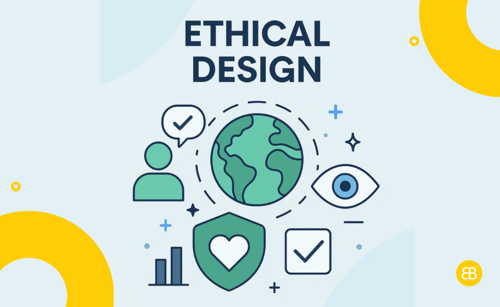Ethical Design: Creating Responsible, User-Centric Apps

Ethical design is the practice of building apps that prioritize user rights, transparency, fairness, and wellbeing—ensuring your product respects people, not just profits.
Why It Matters
-
Builds Trust: Transparent practices increase loyalty and user retention
-
Protects Reputation: Avoids dark patterns and unethical tactics
-
Expands Reach: Inclusive design welcomes diverse users
-
Supports Brand Values: Aligns product with social and ethical commitments
-
Ensures Long-Term Growth: Focuses on user wellbeing and sustainability
Use This Term When...
-
Making design decisions involving consent, data usage, or onboarding
-
Avoiding manipulation through dark UX patterns
-
Planning privacy-focused features and messaging
-
Designing with accessibility, inclusivity, or cognitive load in mind
-
Evaluating ethical risks or long-term impact on users’ mental health
Real-World Example
In the MindNest app project, we applied ethical design by clearly explaining data use, avoiding unnecessary notifications, and making accessibility a core feature. As a result, user trust increased and app reviews reflected higher satisfaction and perceived integrity.
Founder Insight
Optimising for conversions is important—but never at the cost of user dignity. Ethical design isn’t anti-business—it’s about creating value with users, not from them. The long-term gains from trust and retention are worth far more than short-term tricks.
Key Metrics / Concepts
-
Consent Clarity: Are users informed before opting in?
-
Accessibility Score: How well does your app serve people with disabilities?
-
User Satisfaction + Retention: Are people staying and feeling good about it?
-
Dark Pattern Audit: Is your UX honest, or does it manipulate behavior?
-
Trust Indicators: Privacy policies, opt-out controls, and user-friendly language
Tools & Technologies
-
WCAG Auditing Tools: Evaluate accessibility compliance
-
Figma Plugins: Support inclusive and ethical UI design
-
Hotjar (Ethical Use): Gathers user insights with consent
-
User Testing Platforms: Detect confusion or frustration early
What’s Next / Future Trends
As users grow more privacy-conscious and regulations tighten (GDPR, CCPA, etc.), ethical design is becoming a competitive differentiator. Future-forward apps will embrace consent by design, dark pattern bans, and inclusive design frameworks as standard practice.
Related Terms
-
Accessibility: Makes sure everyone can use your product
-
Data Privacy: Central to building user trust
-
Human-Centered Design: Focuses on empathy and user wellbeing
-
Consent: Gives users control over what they share and do
-
UX Design: The foundation where ethics and experience intersect
Helpful Videos / Articles / Pages
Call to Action
Want to build an app your users trust and love?
Let’s collaborate to create a digital product that’s not only functional and beautiful—but ethically sound from day one.